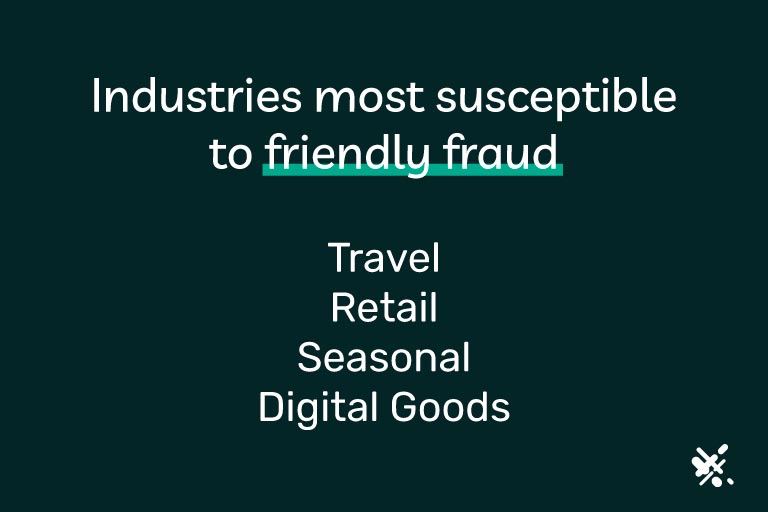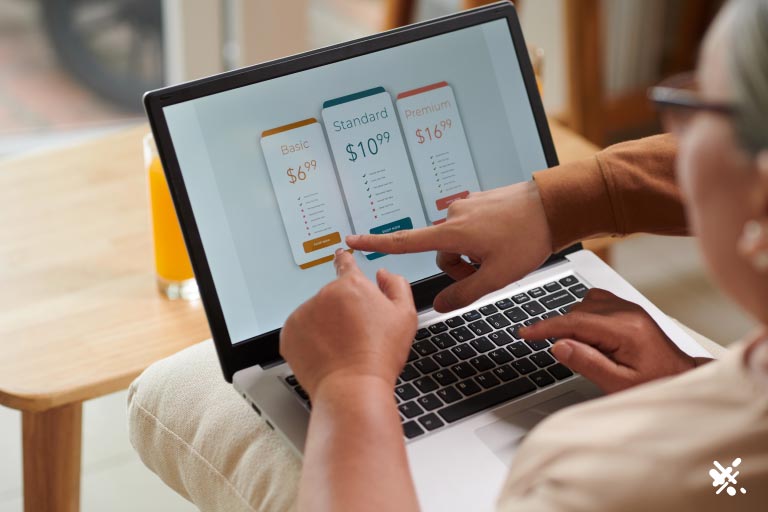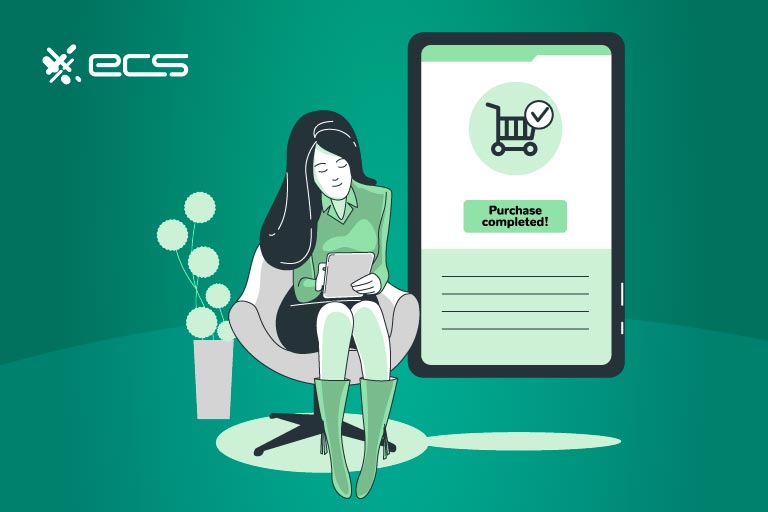Digital goods and chargebacks: Digital goods merchants experience high chargeback disputes. But there are ways to solve this issue. With the right strategies in place, digital goods merchants can build their business and rest easy when meeting their sales numbers every month, that those won’t drop due to preventable chargebacks.
Can Digital Goods Merchants Prevent Chargebacks?
Digital goods are items that are sold online and consumed digitally. Think of movies, eBooks, classes, and access to subscription platforms. Digital goods and services are a significant part of the economy. Subscription services, for instance, are already valued at a comparable $275 billion globally.
With numbers like these, you might suspect that consumer behaviors in these markets are normative. For many people, shopping online is a substitute for shopping in person, and the average consumer does both.
But the comparability of the digital goods marketplace to brick-and-mortar does not translate into the payment landscape. Digital goods are far more susceptible to disputes and chargebacks. There are, however, ways for merchants who sell digital goods to fight the tide.
What’s a Chargeback?
A chargeback is when a customer calls their bank or credit card company to dispute a charge. In this way, they skip contacting the merchant directly for a refund. To the customer, it often does not make much of a difference. Consumers are well fortified by legislation meant to protect them from unsavory lending practices.
One downside to this regulatory climate is that consumers win about 68% of their chargeback disputes. Doing a little math, you’ll see that merchants defend their bottom line about 32% of the time. Chargeback management is a tricky issue to navigate because disputing a chargeback may often not be cost-effective.
What a customer really should do is contact the merchant for a refund. There are reasons they don’t, and we’ll go into that later. In some cases, the customer is engaging in friendly fraud. In any case, a chargeback versus a refund is a huge difference to the merchant in question.
That’s because payment processing is a complex process involving several participants. You, the customer, your payment processor, the card networks, their bank, and your bank. The payment gateway or POS terminal is just one stop on the journey of paying for products and services. And each stop has its tolls.
When the journey has to be reversed on the backend, those tolls will come back bigger and better. In fact, at this point, they’re more like trolls—and not the friendly kind with brushable hair. By the time the chargeback process is finished, a merchant can be left with a bill of up to $200 (or more), plus the cost of lost inventory.
Why Are Digital Goods Merchants So Susceptible to Chargebacks
To answer that question, let’s first look at typical in-person payment methods. Setting cash aside, we’ll focus on card payments. When a customer wants to purchase physical goods at a physical location, they’ll be prompted to complete the payment at the POS terminal.
Once upon a time, customers swiped their credit cards, passing a magnetic strip through a reader. But these magnetic strips contained static information. Consequently, they could be skimmed by fraudsters, who would copy the information and use it to make fake credit cards or shop online with the card info.
That’s why Visa and Mastercard are already in the process of phasing out the magnetic strip. Without that, consumers have to either insert an EMV chip or tap the card over the terminal. Either way, Encrypted, randomly generated pieces of information are exchanged to complete the payment. This makes it impossible for card information to be useful again.
In some cases, the customer even has to put in a PIN. Only the customer knows this number (ideally), making it impossible for fraudsters to use it. True, customers can choose the pinless credit option on the POS. But as a last line of defense, the merchant is there to stop any suspicious payments from being completed.
It’s An Invisible Transaction
Then, of course, there are the backend parties and their anti-fraud software. Part of this anti-fraud defense is increasingly using Artificial Intelligence or AI. With AI, the bank can establish a normative pattern of behavior for that cardholder, and see if the transactions fall within its scope.
And therein lies the problem with online merchant accounts. There is no putting in PINs. There is no EMV chip to generate random tokens. There is no merchant gatekeeper to ask for an ID if something smells fishy.
It’s also much more difficult to use geolocation to gauge normative customer behaviors. There is just the cardholder, inputting card numbers and their shipping address.
In terms of physical goods, companies like Amazon have thought of creative solutions. They will photograph the delivered item. Services like DoorDash do the same thing, which is why you may have seen your dinner on Instagram (just couldn’t resist the incredible film noir lighting by your door, dude…sorry).
But this doesn’t work for digital goods. There is no tangible item to photograph on someone’s doorstep. There is just the transaction and perhaps (if possible) a way to log the delivery of the goods. In most cases, you cannot go into a customer’s laptop and see if they actually consumed said digital goods.
So how can you defend yourself against digital goods chargebacks? We’ll get there soon. But first…let’s get friendly. Fraud, that is.
The Rise of Friendly Fraud
Trends are funny things. One year kids are collecting Pokemon Cards, and the next year they’re slapping their teachers for TikTok fame and glory. How the times have changed.
In any case, before we start waxing poetic about wholesome pursuits that once were, let’s mention friendly fraud. Friendly fraud is a growing consumer trend with big impacts on the retail landscape.
What is friendly fraud? Exactly what it sounds like. No actual fraud or identity theft is involved. A customer purchases something, receives it, or uses it, and then pretends like it ain’t never happened—no sir, no way. Honest!
Reminds you of the joke about the not-so-bright fellow who hid in a potato sack and cried “potato” when the police prodded it.
Unfortunately, friendly fraud is a lot harder to catch outside of punchlines. A whopping 23% of consumers admit to committing friendly fraud. And if icebergs can teach us anything, the number is probably a lot higher. As the average value of an item subject to chargeback was $192 in 2022, merchants can expect to lose $100 billion in 2023.
Collectively, not individually, of course. Not every merchant is selling Kobe beef burgers dusted with gold flakes and sprinkled with beluga caviar, delivered to your yacht in a helicopter. Even so, these are frightening numbers for merchants to see. The prospect of two out of ten customers ordering something, using it, liking it, and then filing a chargeback is not good.
And as mentioned, this problem is worse if the goods you deliver are not tangible. Such is the concern for digital goods merchants.

Industries Susceptible to Friendly Fraud
Some industries are more impacted by friendly fraud than others.
Travel
One particularly hard-hit industry is travel. Some audacious consumers are booking vacations, enjoying them, and then claiming they never happened. Others are canceling their flights with the airline, and then filing a chargeback with their credit card.
Retail
Retail is also impacted by friendly fraud. Some pundits have conjectured that friendly fraud began to really take off during the Covid Pandemic. The combination of increased online shopping and consumers out of work may have come together to spur a wave of friendly fraud.
Seasonal
It is also more evident in seasonal surges, such as the post-holiday season. Consumers may look at their bank statements, see a charge they don’t recognize, and file a chargeback.
Digital Goods
Digital goods can be problematic in this regard. As there is no tangible item for the consumer to remind the consumer about the charge, they may forget why it’s there. There is also often very little recourse to see whether or not the customer used the digital goods.
In some cases (such as digital goods sold through a platform that tracks open, downloads, and percentages of content consumed) it’s possible. In others, it’s not. Either way, if your dispute heads all the way to Visa or Mastercard arbitration (as an extreme example), the card network is not going to subpoena the customer’s laptop.
Benign Friendly Fraud
Sometimes friendly fraud is not hostile, but benign. This type of friendly fraud can occur when an account holder does not know that someone in their household initiated a charge. For instance, a consumer might see a $50 charge for Amazon Prime and not realize that their three-year-old ordered several seasons of Paw Patrol on the family iPad.
We’ll go into ways of avoiding chargebacks momentarily. But while we’re on the topic of Amazon, let’s look at what they’ve done to fight against problems with accepting payments. Amazon will send you an email about your order, calling it to your attention. They will also give you the option of settings passcode on your devices, and other parental controls.

Digital Goods and Recurring Payments
Many digital goods are part of a subscription economy. These services range from B2C entertainment (Netflix) to B2B cloud-based software (Salesforce). In addition to the corporate behemoths we mentioned in parentheses, there are thousands of other online, service-based vendors.
Customers pay a monthly fee and in return, get access to movies, music, or software that improves the workplace. Care to Salesforce and chill? Sometimes these subscriptions involve tangible goods, such as bespoke handmade gifts, grooming products, or gourmet food. However, the vast majority of these subscriptions are entirely digital: movies, eBooks, classes, app purchases, or access to a platform.
The average millennial has around 4 recurring billing subscriptions (at least), and consumers spend around $133 on subscription services. With all that juggling, they’re likely to forget what they’re paying for. This is especially true if they gave their credit card info over for a free trial, and then forgot about the subscription they were trying out.
Chargebacks Are an Easy Solution For Customers…
The only easy solution for these consumers is to file a chargeback. Sometimes they will attempt to reach the company in question, but it’s too late to cancel the most recent payment. In frustration, they may turn to their bank and initiate a dispute.
Banks and card issuers will often side with their customers. Some of this is due to regulatory concerns. And some of it is just an attempt to retain the customer. Customers who have a negative chargeback experience may take their frustration out on the card issuer.
To preempt this problem, the bank or issuer may immediately credit their account and begin the chargeback process. The merchant loses out because they now have to invest time and energy in disputing the chargeback. Fortunately, if they have their ducks in a row, this will be much easier.
Can Merchants Dispute a Chargeback?
They certainly can. But why not have your cake and eat it too…if that’s the right expression. Merchants receiving digital goods payments may seem to be at a disadvantage.
As mentioned, all their transactions are card-not-present. And CNP transactions are much easier to be fraudulent since the customer is not there in person.
But necessity is the mother of invention, as they say. And in the face of increasing chargebacks (as much as 70% of which may be friendly), merchants have come up with some ways to preempt the dispute process, before it begins. Even if those merchants are delivering essentially invisible goods.
Below are 5 effective strategies to help digital merchants prevent chargebacks.
1. Keep Branding Consistent
Merchants should make sure their branding is consistent. As mentioned, one common cause of chargebacks is that consumers do not recognize something on their bank statements. If you are selling something that comes in discreet packaging (like some really zesty, envy-inducing bespoke barbecue sauce), make sure customers know how that charge will appear on their credit card bill.
This problem can plague digital merchants in particular. Many digital goods merchants sell whatever they’re selling through platforms like Udemy, ClickBank, or Amazon. When these words appear on the customer’s bank statement, they may have no idea what they are for.
Mastercard has come up with an interesting solution to this problem, pioneering integrations that actually place a company name and logo into banking statements on consumer apps. As soon as a customer sees the grinning visage of Charles E. Cheese, they’ll remember that afternoon of dancing muppets, flashing arcade games, and sub-par pizza. Or not, and then they’ll perhaps call their bank to file a dispute.
Of course, our humorous example is related to a brick-and-mortar retailer. But as this type of software solution develops, there is the certainty that it will become more personalized for digital goods merchants as well. Just like a website owner can design their own favicon (the logo that fits into a browser tab), they will likely be able to customize a small name and logo that appears on customers’ statements.
2. Make Sure Customers Have Easy Access to Contact You
In ancient times, signal fires could pass information long distances in a short amount of time. Thankfully, you won’t have to light any signal fires atop a mountain, although that would look cool. You can just make sure your contact information is readily displayed on various channels and platforms.
That means a phone number and email on your website. It may also mean having a Facebook page, Instagram account, and Twitter handle. You may even have to bite the bullet and get on TikTok.
The more accessible you are to your customers, the more likely they will be to contact you if they have a problem. Otherwise, they’ll get on the phone with their bank or card company.
3. Stay Visible to Your Subscribers
You can also leverage customer data to be proactive about communication. This idea is particularly relevant to digital goods merchants.
Content marketing often ties well into the purveyance of digital goods. Use that fit to deliver content to your customers, consistently. By content, we mean interesting information that relates to your business.
You can also collect customer emails to provide a digital receipt, and ask customers if they’d like to receive recurring updates and coupons. Send automated reminders that their payment is coming up. You can even get creative and use their mailing address for actual paper (gasp) marketing materials.
Whatever you do, make sure you stay in front of your customer. If they know who you are and appreciate the goods and/or services you offer, they will not initiate a dispute in reaction to a surprise charge. For one, there will be no surprises.

4. Be Flexible And Offer Exceptional Customer Service
A significant portion of chargebacks may be due to customer frustration. The company is available. The digital goods have been received (e.g. they’ve read the book, or seen the movie).
The customer is not initially interested in filing a chargeback. But an argumentative interaction with the merchant leads them to hang up and call their bank instead.
This is where a little flexibility can come into play. You will have to assess how flexible you want to be. For many small to medium size business owners, this will require some intuitive feeling out of the situation.
You don’t want to run the risk of giving away free stuff. But you also don’t want to run the risk of getting hit with a chargeback.
Having good customer service in place can go a long way. So can offering odds and ends to appease the customer, such as a free month, a percentage off, or additional goods. Before this conversation even starts, it’s a good idea to have your cancellation policies clearly communicated in writing.
Presenting these to the customer at the point of sale can prevent some chargebacks from occurring in the first place. Customers may be willing to accept that they were in the wrong (despite the customer always being right). And if they are not, clear terms at checkout can help you win a chargeback dispute.
5. Send a Receipt…In The Actual Mail
If you are selling digital goods, do not just rely on an emailed receipt. Mail a physical receipt to the consumer as well. This might strike you as a little bit odd. After all, if they’re not receiving physical goods, why should you send them a physical receipt?
An actual paper receipt, especially one sent with certification, is a valuable piece of evidence for a completed transaction. If the customer in question decides to initiate a chargeback, you will have a very strong piece of evidence that said disputant made a purchase.
The paper receipt will also give them significant recourse to request a refund. If they choose to ignore the contact information on the receipt, you can use that to justify disputing the chargeback. This customer was presented with clear recourse to request a refund but instead chose to go to their bank.
Conclusion
Unfortunately, chargebacks are part of the digital goods landscape. But with a little proactivity and creativity, you can preempt a certain percentage of these disputes. If you have any other questions about ways to foil this increasingly-popular method of dispute, contact us.
We work with merchants of all types, including those who sell digital goods. Give us a call or fill out the contact form below to discuss how you can prevent digital goods chargebacks.
